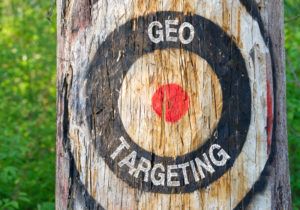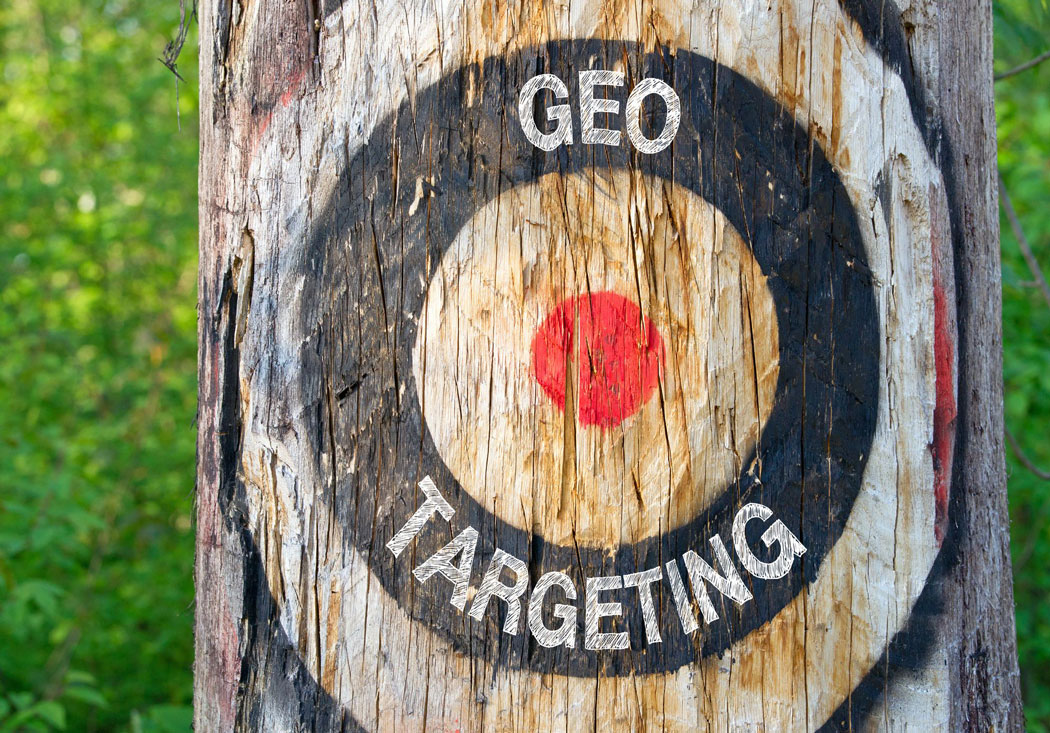
The total spending within the United States alone is at $94 billion. Search marketing makes up the majority, with companies spending around $42 billion.
One of the most easily misunderstood concepts within the industry is geos. A lot of experts can tell you that the two common terms–geofencing and geotargeting–often get interchanged. These two are different and you can use them in different marketing strategies.
Understanding what each term means is the first step. Approaching your geofencing provider can help if you know the right questions to ask.
Are you ready to learn the difference between the two concepts? Read on and find out.
What Is Geofencing Advertising?
This is the concept of placing an imaginary boundary around locations. It uses the user’s IP address to do so.
The ads you put within this parameter get user attention as long as they’re within the location. It doesn’t matter what device they use–a computer, a tablet, or any mobile device can see it.
Certain locations like schools, sports stadiums, or residential areas are common targets for geofencing. It targets an audience that is most likely interested in businesses, services, and other deals in their area.
Snapchat and some other services allow you to get an area and geofence it. You can draw this virtual fence around the location you want. What this means is you can control where the ads and filters appear.
What Is Geotargeting?
This concept attempts to give ads to specific people that meet its requirements. They only target people within its given radius. Its key difference from geofencing marketing is that it checks on a set of consumer criteria.
Some of these criteria include:
- Demographic
- Behaviors
- Interests
- Location
This technology allows you to control where the ads should appear. You can exclude locations as you see fit.
If your business intends to target a larger audience base, this is a good choice. After all, it’s defined by demographics and keywords.
Key Differences Between Geofencing vs. Geotargeting
To get a better understanding of geotargeting vs geofencing comparison, you need to understand the basics. Geofencing advertising campaigns usually draw a virtual fence around a specific location to show their location-based advertising. Meanwhile, geotargeting allows users of different types of parameters to run ads. Geofencing can be part of geotargeting advertising but not vice versa. Here are the key points of differences that help advertisers and marketers decide which one to use:
1. Purpose
Geofencing: Triggers an ad or a notification whenever the user enters or exits a geofenced area. The advertising method aims to reach users who are in close proximity to the business location and can respond to the offer or promotion immediately.
Geotargeting: It involves targeting users on a larger scale based on their location and preferences. Data sets indicating interests and preferences are often used to curate highly engaging ads. Ideal for customers who are interested in a certain product or service from a specific location.
2. How does it work?
Here’s how geofencing ads work:
- A well-defined fence is set in multiple locations (primarily where your target audience could be present).
- Geofencing technology uses GPS, cellular, or Wi-Fi data to pinpoint the location of your target users.
- Once the target user enters or exits the geofence, they trigger ads that are sent as text messages or app notifications. These ads are crisp and to the point, making it easier for your customers to decide whether to visit your store or not.
Here’s how geotargeting ads work:
- Geotargeting ad campaigns aim at reminding your potential customers about your products and services at various touchpoints that are strategically placed across the map.
- The method uses cookies and the IP address of the target users to show them relevant ads as they browse on their phones.
- Factors like demographics, location, and user behavior are taken into account to create relevant ads that entice customers to check out the offers available at the physical store.
3. Target audience
Geofencing ads: The target customers are usually local customers who could be looking for a service or a product offline. People who are looking for steal deals are also the target audience, as they are more likely to respond positively whenever an offer is made.
Geotargeting ads: They are ideal for catching the attention of potential customers who are either living in the target area or frequently visiting. These people should be interested in the range of products and services being offered in the target region. Aside from residents or visitors, the target audience can also include tourists who are coming over for vacation and might be interested in buying from local events or shops.
4. Accuracy
Geofencing: The campaigns are based on location data, often taken from a combination of GPS, cellular, and Wi-Fi data. The campaigns are accurate anywhere between 100 and 200 meters.
Geotargeting: Since IP addresses are usually used as location data, geotargeting ads are highly likely to be inaccurate.
5. Recommended for
Geofencing can be effective for brands looking to increase their engagement with their marketing strategy. Meanwhile, geotargeting can be beneficial for businesses looking to approach their target audience with more relevant and creative messaging to increase organic traffic to their brick-and-mortar store.
Benefits Of Geofencing And Geotargeting Marketing
There are a lot of benefits to using both in your marketing campaign. This is especially important when you’re trying to dominate your local area. If you’re a small to medium business, these two concepts are your friends.
Small businesses are the backbone of the industry. After all, more than 50% of the employed population of America works in small businesses. Here’s how you benefit from both:
1. It Improves Your Sales
Geofencing uses smartphones’ GPS location tracking to find customers within your area and boost local sales. If you’re a business with a physical location, you can send messages to customers. The messages can be ads or invitations for the best deals.
This means that you can promote your business to individuals who may be interested in what you offer. This increases the number of people going to your location, and with more foot traffic, you might gain more loyalists to your brand over time.
2. It Gathers Customer Data
Both geofencing and geotargeting tools help your business collect information. This allows you to gain a better understanding of your consumer’s buying habits. It’s often more effective than surveys and questionnaires.
Once you gather enough data, you’ll know which customers to persuade more within your area. You gain an advantage over your competitors since you know what to use to persuade your customers, so if you’re not using these, you might get left behind.
3. It’s Customizable
When you run location-based marketing, you can geotarget your audience. This means that you can run each of these at once. It’s easy to change depending on the location of the ad campaigns.
You have the ability to change your message depending on the audience you target. This will let you focus on different people based on your criteria. It’s a unique method of engaging and matching your business with relevant people.
4. It Helps Control Your Visibility
When you geotarget people, you have the ability to get the most qualified leads around. With this, you’ll save a lot of money and make the most out of it. As an example, you can use your budget to run a local campaign and get most of the people in your area.
This allows you to make the most out of your marketing budget. You’re wasting money if you opt for a national campaign instead. You can restrict the ads and choose where they appear so you only spend money on advertising to the audience within your locality.
5. It Helps You Learn About Your Competition
With the use of geofencing, you have the opportunity to get an analysis of your competitors. It allows you to know your biggest competitor in the local markets. You’ll have a general idea on how loyal your customers are.
If you want, you can see where they go if they aren’t visiting your business. Sizing up your competition allows you to know how much budget you need to prepare. Knowing this, you only spend on advertising to stay ahead of your competitors. This can help you optimize future campaigns.
6. It Enhances Your Deals
Using both will give you a more focused means of letting people know about your special offerings. It allows you to discover and target potential customers and give them a deal they can’t refuse. Once you know your audience, you can start writing the right messages to deliver.
Get Geotargeting Services
Do you need a marketing tool to promote your services locally? If so, use geotargeting and geofencing.
It allows you to mold the data you gather into the foundation of your marketing campaign. Take advantage of the insights and analysis it offers.
Doing this ensures a significant boost in your future conversions. If you don’t plan to use both, think of your target market. For example, if you don’t mind specific audiences, geofencing is your best option.
Do you need geofencing and other solutions? Contact us today, and we’ll help you outsmart your competition.
When to use Geofencing and Geotargeting
Geofencing:
- Attracting foot traffic
- Promoting real estate
- Offering personalized deals
Geotargeting:
- For promoting local events
- Promoting personalized services
- Promoting niche-specific products
Tips to Implement Location-based Advertising
Now that you have some clarity about the geotargeting vs. geofencing comparison let’s discuss some useful tips that can help you boost your location-based advertising campaign.
Select the Right Location Size
You must choose a location size that aligns with the density and behavior of your target audience. If you select a larger radius, the message may get diluted. With a smaller area, you can focus your efforts more effectively.
Make Your Ads Actionable
Incorporate clear calls to action (CTAs) in your location-based ads. Use phrases like “Visit Now,” “Shop Here,” or “Get Directions” to encourage your audience to engage immediately.
Explore Contextual Targeting
Consider using contextual targeting to deliver ads that sound relevant to the local environment. For example, promoting swimwear near the beaches and snowboots in the mountains makes more sense.
Track Your Progress
As you deploy your advertising strategies, you need to constantly monitor the performance of your location-based ads using analytics tools. You need to track metrics such as foot traffic, click-through rates, and sales conversions and optimize your strategy based on the data.
Conclusion
Geofencing is ideal for retail stores, airports, and hotels that could benefit from attracting audiences who are ready to buy from them. Location-based advertising is implemented for a specific geographic location, allowing businesses to increase their brand awareness and consumer base. Geotargeting ads is another location-based marketing strategy that allows a business to connect with local audiences as well as new audiences. Geotargeting works excellently to attract organic traffic to the website and encourage consumers to buy more from the brand. Any advertising campaign for geotargeting and geofencing aims to solve a problem with a location-based marketing strategy.

